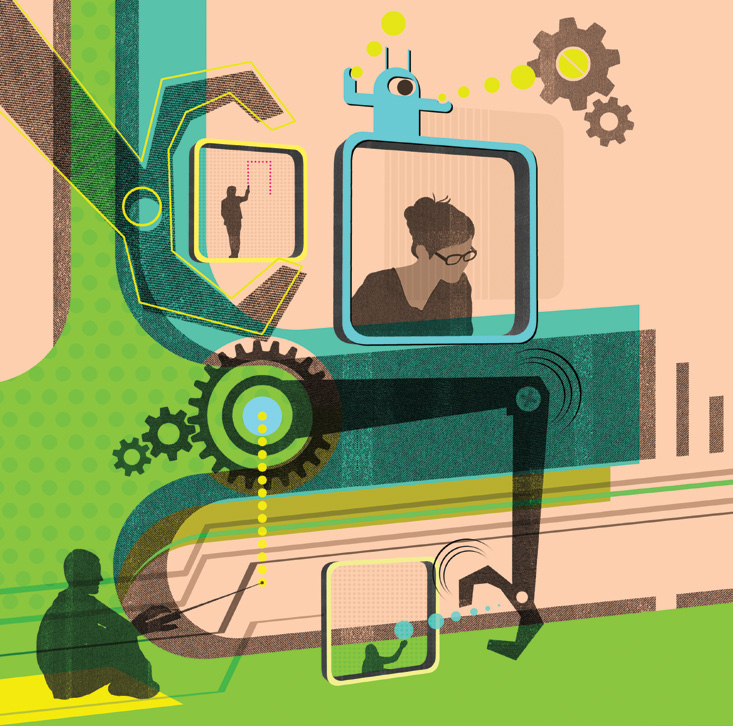Share this page
Illustration: Mark Allen Miller/Frank Sturges

Keeping pace with innovation starts in the classroom. Developing (and sharpening) 21st-century skills not only prepares students for challenges they will encounter within a technological landscape — it will also empower them to reach their full potential. One way to introduce competencies in design, coding, art and engineering is by teaching robotics: an effective way to captivate both your visual and kinesthetic learners. If you aren’t sure where to start, have a look at carlrobotics.com and CodeMyRobot.ca. Some of my students at St. Peter High School in Ottawa partnered up with Carleton University’s engineering faculty to invent a low-power and low-cost multi-use robot learning platform (known as “CARL: coding, autonomous, robot, learning”), that allows hands-on learning in a few easy steps and a whole lot of fun.
— Rick Alexanderson, OCT Ottawa Catholic School Board
➞ Have a classroom idea to share? Send it to us at ps@oct.ca and your advice could be published in an upcoming issue! Check out our Professional Practice Research archive at oct-oeeo.ca/research.
By Stefan Dubowski
Want to fortify the skills your students need to succeed in this knowledge-based society? Check out The Learning Exchange’s Knowledge Building Gallery (oct-oeeo.ca/KBgallery), an electronic booklet with teacher tools and strategies to bring the knowledge-building concept into kindergarten to Grade 12 classrooms.
Knowledge building is a process that a learning community can use to create knowledge. By exploring an idea, say biodiversity, students, as a group, ask questions and respectfully listen to ideas, come up with new ones and then collaboratively find solutions to problems. Carl Bereiter and Marlene Scardamalia — education researchers at the Ontario Institute for Studies in Education at the University of Toronto — created the model. It involves ideas such as information should be shared, that it’s better to have many opinions than just a few and that people learn best when they tackle real-world problems instead of theoretical ones
The process incorporates skills that many believe students will need to thrive, such as creativity, and the ability to innovate and collaborate. The model helps children in the short term, too — they’re more engaged when they see how their learning applies to not just their own development but to their community as a whole.
The gallery, funded by the Ontario Ministry of Education and others, is full of activities and strategies. You’ll find a group lesson that explains the model. You’ll see how to develop a knowledge-building wall — a flow chart of sorts that documents students’ thoughts and observations on a big idea. Gain insight into how to communicate the benefits of collaborating on prototypes, as well as discover how to integrate knowledge building into your math lessons.
This resource offers links to websites, videos and podcasts to help you get inspired and keep up the momentum. In the separate Knowledge Building in Action case studies guide (oct-oeeo.ca/KBcasestudies), you’ll find inspiring stories about teachers and students who have used these strategies to positive effect.
“None of us is as smart as all of us,” says a Japanese proverb. Knowledge building encompasses that collective mindset. If you think your students will benefit from this practical, energizing and innovative approach, add the Knowledge Building Gallery to your must-read list.